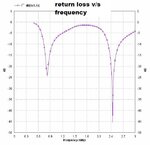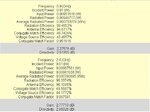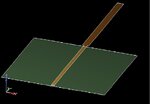p2vimal
Newbie level 2

we have prepared an antenna using copper plates, wherein the radiating element is 5x85mm,groundplate is 80x80mm and in between radiating element and groundplate there is a gap of 0.6mm.(air as dielectric)
however we want to incorporate tuning into this using a varactor. How do we go abt it? when we connect a DC circuit,what values of capacitor ,resistors or varactors do we use.?
thanks
however we want to incorporate tuning into this using a varactor. How do we go abt it? when we connect a DC circuit,what values of capacitor ,resistors or varactors do we use.?
thanks




